
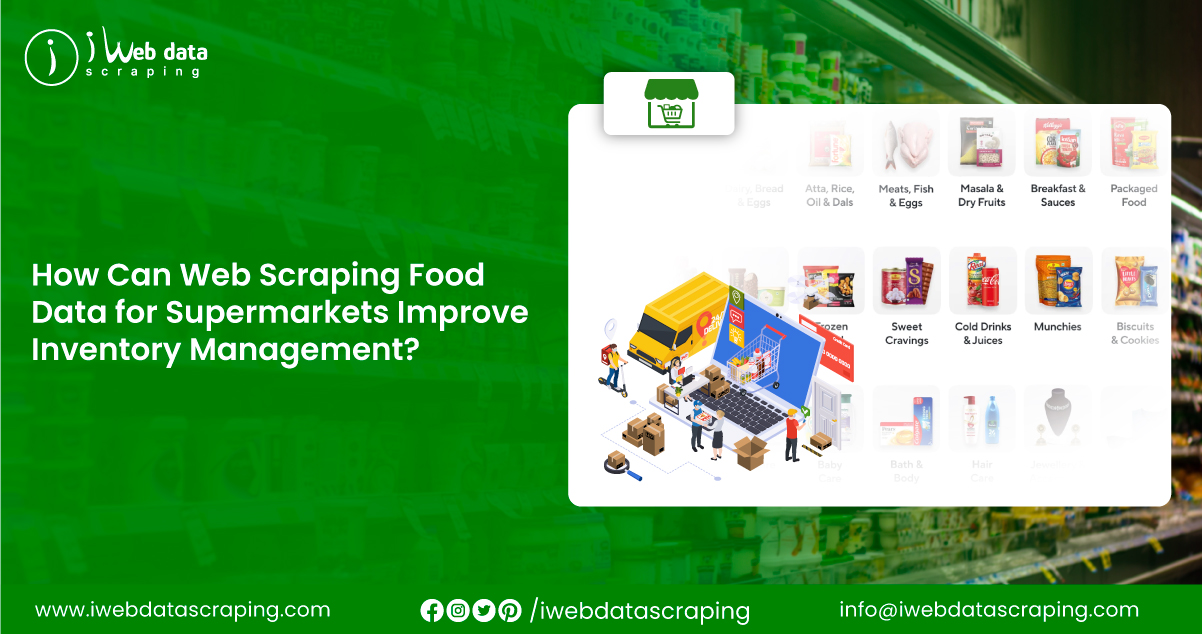
In the fast-evolving world of retail, grocers and supermarkets continuously seek innovative ways to stay competitive, optimize their operations, and enhance customer experiences. One such technology gaining momentum is food data scraping. This technique involves extracting valuable information from various online sources, such as websites, e-commerce platforms, and databases, about food products, prices, nutritional information, reviews, and more. In 2025, food data scraping is poised to transform how grocers and supermarkets operate, offering substantial benefits in inventory management, pricing strategies, personalized marketing, and customer satisfaction. Web Scraping Food Data for Supermarkets enables businesses to gather real- time insights, which can be used for data-driven decisions. With food data extraction for grocery and supermarkets, retailers can better anticipate demand, optimize stock levels, and develop more targeted promotional campaigns, ultimately improving customer experiences and enhancing operational efficiency.
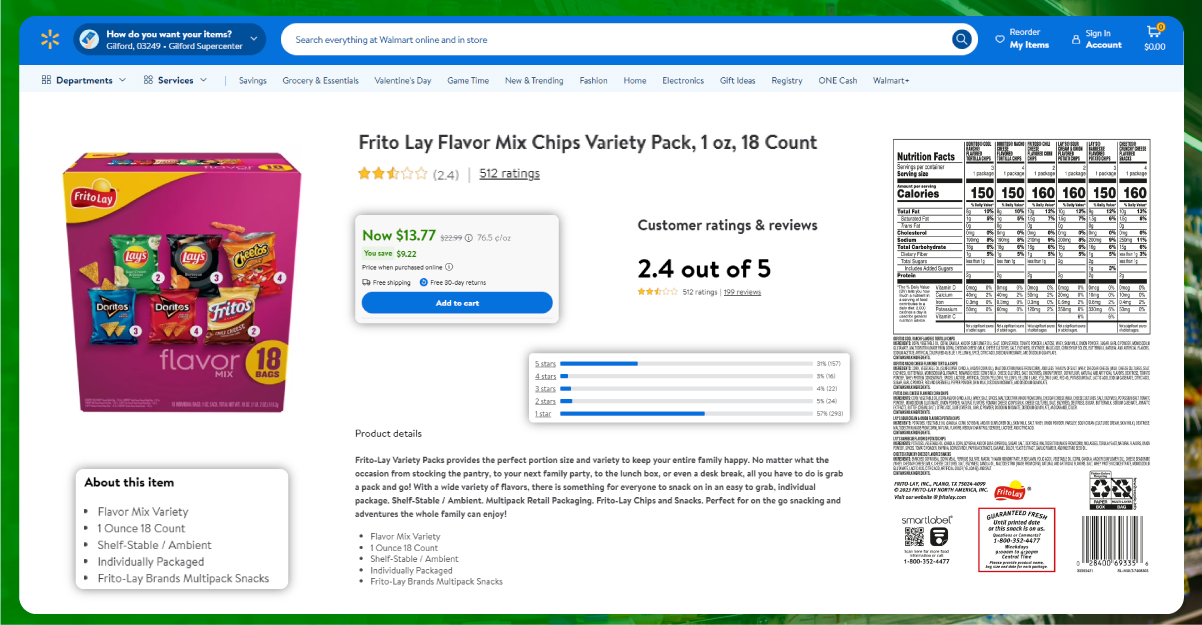
Data Scraping for Grocery stores and Supermarkets refers to the automated process of gathering information related to food products from the Internet, including product details, prices, availability, reviews, ingredient lists, and promotional offers. Grocers and supermarkets can use specialized tools and techniques to access and organize this data, allowing them to create valuable insights and drive strategic decisions. This practice helps retailers monitor competitors, understand customer preferences, and ensure product compliance with nutritional regulations.
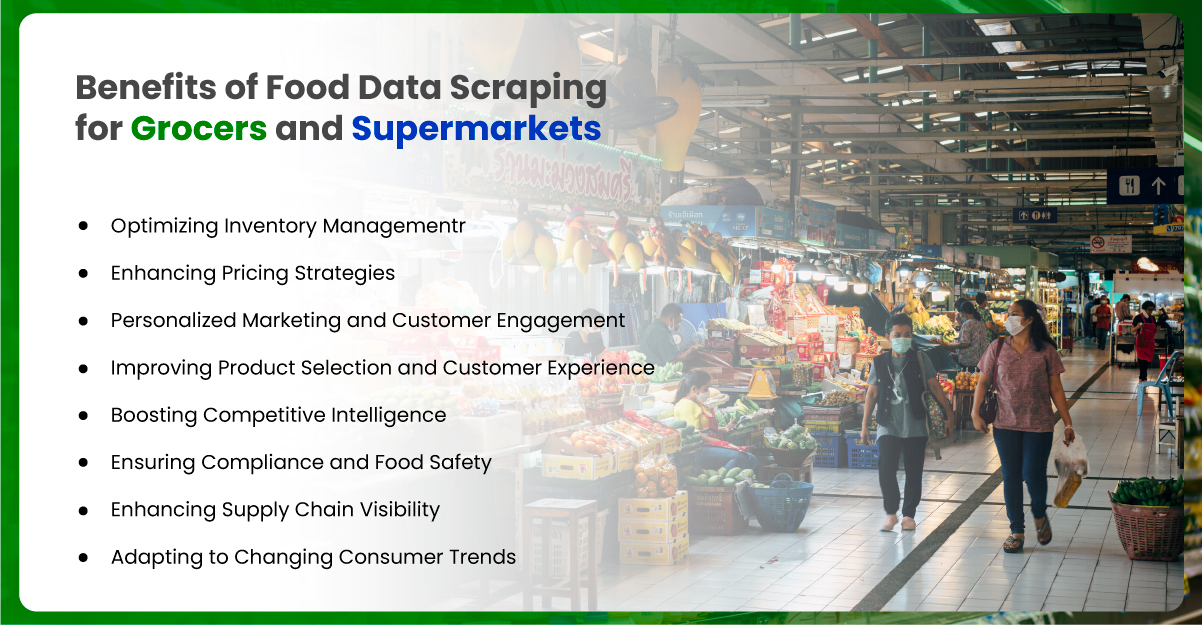
Food data scraping offers grocers and supermarkets valuable insights to optimize operations, enhance inventory management, improve pricing strategies, and personalize marketing. By leveraging real-time data, retailers can stay competitive, streamline their processes, and deliver a better customer experience.
1. Optimizing Inventory Management: One of the primary benefits of food data scraping for grocery retailers is the ability to streamline inventory management. Grocers can gain real-time insights into stock levels, trends, and supply chain dynamics by continuously monitoring product availability across different platforms. This data enables them to anticipate demand, reduce overstocking or understocking, and improve customer product availability. For example, by scraping data from multiple suppliers or competitor platforms, supermarkets can track when specific products are in high demand and adjust their inventory accordingly. This reduces the risk of losing sales due to out-of- stock items and minimizes the need for excessive stock, reducing operational costs.
2. Enhancing Pricing Strategies: Pricing is critical for grocers and supermarkets in a highly competitive market. Food data scraping allows retailers to monitor price fluctuations across various e-commerce platforms, competitor websites, and grocery delivery services. With this data, supermarkets can adjust their pricing strategies quickly, ensuring they remain competitive while maximizing their profit margins. Grocers can also use scraping data to identify seasonal pricing trends or promotional offers, enabling them to effectively plan discounts and sales campaigns. By understanding pricing trends and consumer demand, supermarkets can optimize their pricing models and attract more customers with competitive offers. Grocery pricing data intelligence helps grocers stay ahead of the competition.
3. Personalized Marketing and Customer Engagement: Personalized marketing is becoming increasingly important in the retail industry, especially in the food sector. By leveraging food data scraping, supermarkets can gather detailed insights into consumer behavior, preferences, and shopping habits. This data can create targeted marketing campaigns and promotions tailored to specific customer segments. For instance, by analyzing customer reviews, search queries, and purchase histories, grocers can identify popular products and offer personalized discounts, promotions, or recommendations to individual customers. Additionally, supermarkets can scrape social media platforms to identify trending food products or dietary preferences, allowing them to align their marketing strategies with the latest consumer trends. Food Delivery Data Intelligence can further refine customer engagement strategies.
4. Improving Product Selection and Customer Experience: Grocers and supermarkets can enhance their product selection by leveraging food data scraping to identify emerging trends and consumer preferences. By analyzing reviews, ratings, and discussions on various platforms, they can gain insights into what products customers seek and what features are most important to them. This data enables supermarkets to stock products that align with current market demands, improving the shopping experience. Moreover, supermarkets can scrape data on ingredient lists, nutritional facts, allergens, and certifications (such as organic or gluten-free) to better inform customers about the products they sell. This transparency boosts customer trust and helps supermarkets cater to specific dietary needs, enhancing the overall customer experience. By using Grocery and Supermarket Store Datasets, supermarkets can improve the quality of their product selection.
5. Boosting Competitive Intelligence: In the competitive grocery and supermarket landscape, staying ahead of competitors is crucial for long-term success. Food data scraping provides grocers with valuable competitive intelligence by enabling them to monitor and analyze competitors' pricing, product offerings, promotions, and customer reviews. This information helps supermarkets make informed decisions about product stocking, pricing, and marketing strategies. For instance, by scraping data from competitor websites, supermarkets can identify pricing gaps, assess the popularity of specific products, and pinpoint areas where they can differentiate themselves. This competitive edge allows grocers to respond quickly to market changes, anticipate customer needs, and maintain a strong position in the marketplace. Food data scraping trends for supermarkets 2025 will likely further enhance this intelligence.
6. Ensuring Compliance and Food Safety: In the food retail industry, compliance with regulations and food safety are top priorities. Food data scraping helps supermarkets stay informed about product recalls, safety alerts, and regulatory changes that may affect their operations. By scraping data from regulatory bodies, news outlets, and supplier websites, supermarkets can quickly identify food safety or non-compliance issues, ensuring they take immediate action to protect consumers. Additionally, scraping product information from manufacturers and suppliers helps grocers stay current on ingredient sourcing, sustainability practices, and certifications. This level of transparency can be communicated to customers, building trust and confidence in the supermarket's commitment to food safety and ethical sourcing.
7. Enhancing Supply Chain Visibility: A transparent and efficient supply chain is essential for the smooth operation of supermarkets and grocers. Food data scraping offers enhanced visibility into the supply chain by monitoring product availability, shipping schedules, and supplier performance. This data allows supermarkets to make informed decisions about inventory procurement, reduce lead times, and optimize their supply chain operations. By scraping data related to product deliveries, transportation costs, and supplier performance, supermarkets can identify potential bottlenecks or delays in their supply chain and take corrective actions to minimize disruptions. This proactive approach improves operational efficiency and ensures customers receive their orders on time.
8. Adapting to Changing Consumer Trends: Consumer preferences in the food industry are constantly evolving, driven by health trends, sustainability concerns, and changing dietary habits. Food data scraping helps grocers stay ahead of these shifts by providing real-time insights into emerging trends. By monitoring online discussions, reviews, and social media mentions, supermarkets can identify growing interest in specific food categories, such as plant-based products, gluten-free options, or organic food. With this information, supermarkets can adjust their product offerings, marketing strategies, and inventory management to cater to changing consumer preferences. This adaptability helps supermarkets remain relevant and meet the demands of a dynamic market. Grocery data scraping helps identify these trends faster.
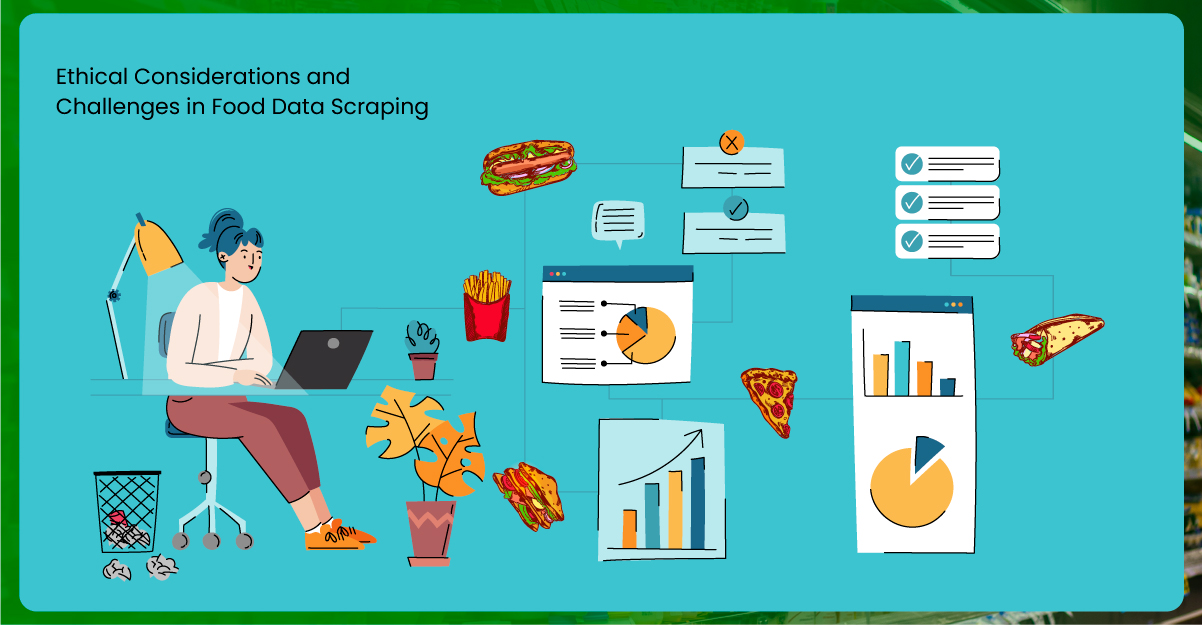
While food data scraping offers numerous benefits, it is essential to consider this practice's ethical and legal implications. Grocers and supermarkets must ensure they are scraping data responsibly and complying with data privacy regulations. Unauthorized data scraping from websites or e-commerce platforms can lead to legal issues, including violations of terms of service or intellectual property rights.
To mitigate these risks, supermarkets should use ethical data scraping methods, such as respecting website terms of service, using publicly available data, and avoiding scraping sensitive customer information. Implementing robust security measures to protect the data collected from scraping activities is also essential.
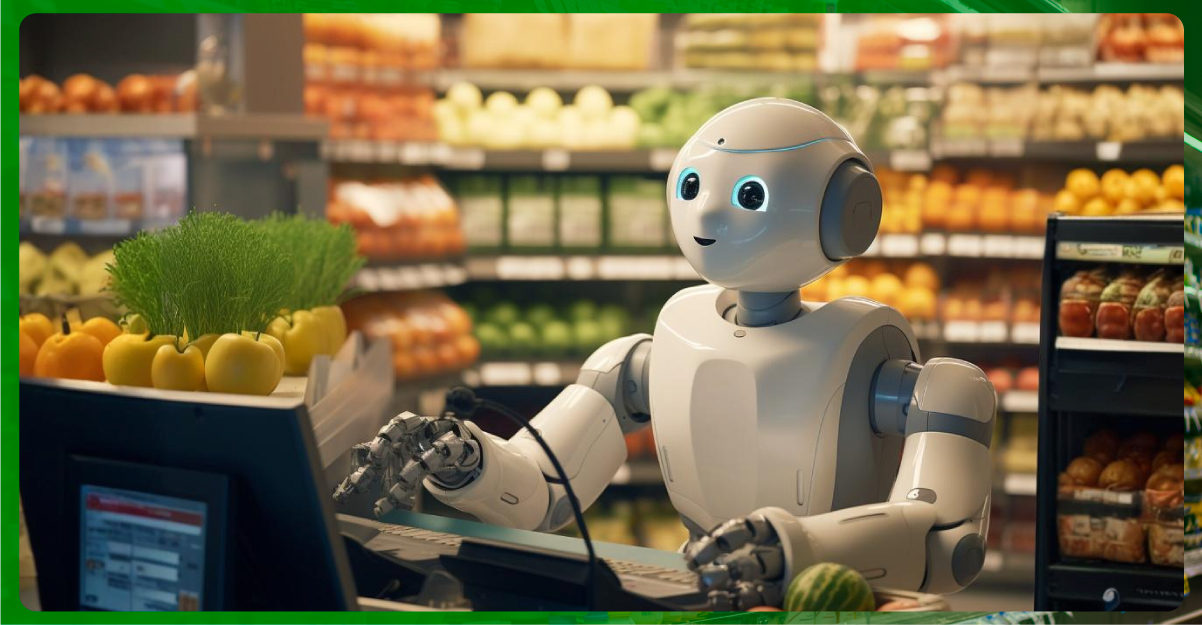
Looking ahead to 2025 and beyond, food data scraping is set to play an even more significant role in the grocery and supermarket industry. As technology advances and more data becomes available, supermarkets can harness even more granular insights to optimize their operations, improve customer experiences, and drive innovation in the food retail sector. The integration of artificial intelligence (AI) and machine learning (ML) with data scraping tools will further enhance grocers' ability to analyze large datasets and predict consumer behavior with greater accuracy. As supermarkets increasingly adopt data-driven strategies, food data scraping will be essential for staying competitive and meeting the demands of a rapidly changing market.
Food data scraping offers tremendous potential for grocers and supermarkets, providing valuable insights into pricing, inventory, customer preferences, and market trends. By leveraging this technology, supermarkets can optimize their operations, enhance the customer experience, and maintain a competitive edge in the dynamic retail landscape. However, it is essential to approach food data scraping responsibly and ethically to ensure compliance with legal standards and protect consumer privacy. As the industry evolves, food data scraping will continue to play a pivotal role in shaping the future of the grocery and supermarket sector.
Experience top-notch web scraping service and mobile app scraping solutions with iWeb Data Scraping. Our skilled team excels in extracting various data sets, including retail store locations and beyond. Connect with us today to learn how our customized services can address your unique project needs, delivering the highest efficiency and dependability for all your data requirements.